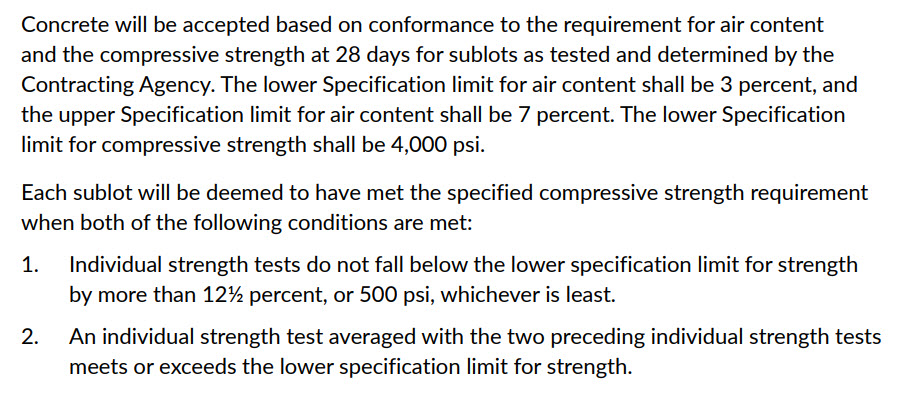An end-result specification is one in which the final characteristics of the product are stipulated, and the contractor is given considerable freedom in achieving those characteristics. In their roughest form, they specify minimum, maximum or a range of values for any given characteristic and base acceptance on conformance to these specifications. For instance, they may state a minimum layer thickness or a range of in-place air voids. However, since it is impractical to measure every square foot of constructed pavement, end-result specifications use statistical methods to estimate overall material quality based on a limited number of random samples. Therefore, end result specifications improve on method specifications in two key areas: (1) they shift the focus away from methods and on to final product quality and (2) they do not rely on the nebulous “substantial compliance” because they clearly define acceptable quality.
Figure 1 is an example of an end-result specification.

Today, most large state and Federal pavement contracts use statistically based end-result specifications that incorporate some elements of method specifications (usually used to guard against early failure of the product). These end-result specifications are often referred to as a “quality assurance specifications”, “QA/QC specifications” or “QC/QA specifications”. Essentially, these specifications specify the end results and also specify certain minimum construction method requirements (e.g., temperatures below which paving is not allowed, descriptions of initial test sections, minimum number of rollers, conditions under which the agency may halt paving operations, etc.).
End result specifications assign pavement construction quality to the contractor, they define the desired final product, and they allow the contractor significant latitude in achieving that final product. This leads to innovation, efficiency, and lower costs. However, these specifications and their statistical sampling requirements are often too complex and resource intensive to be used at the local agency level.
